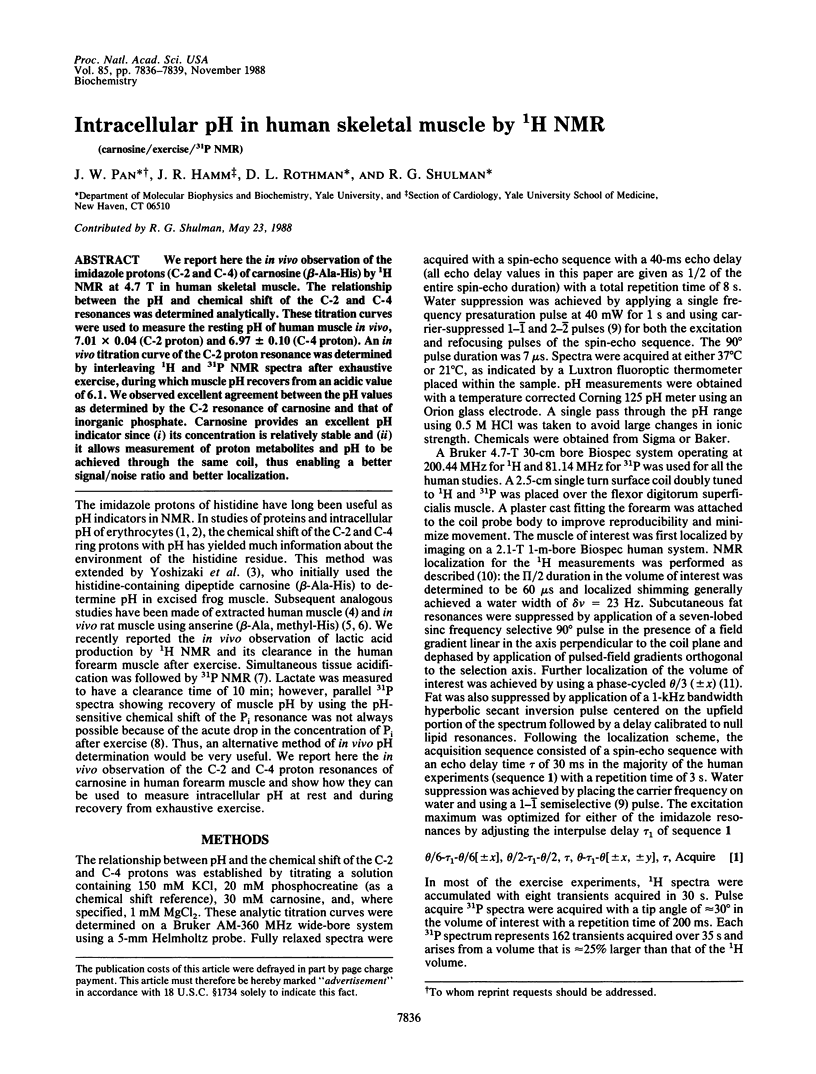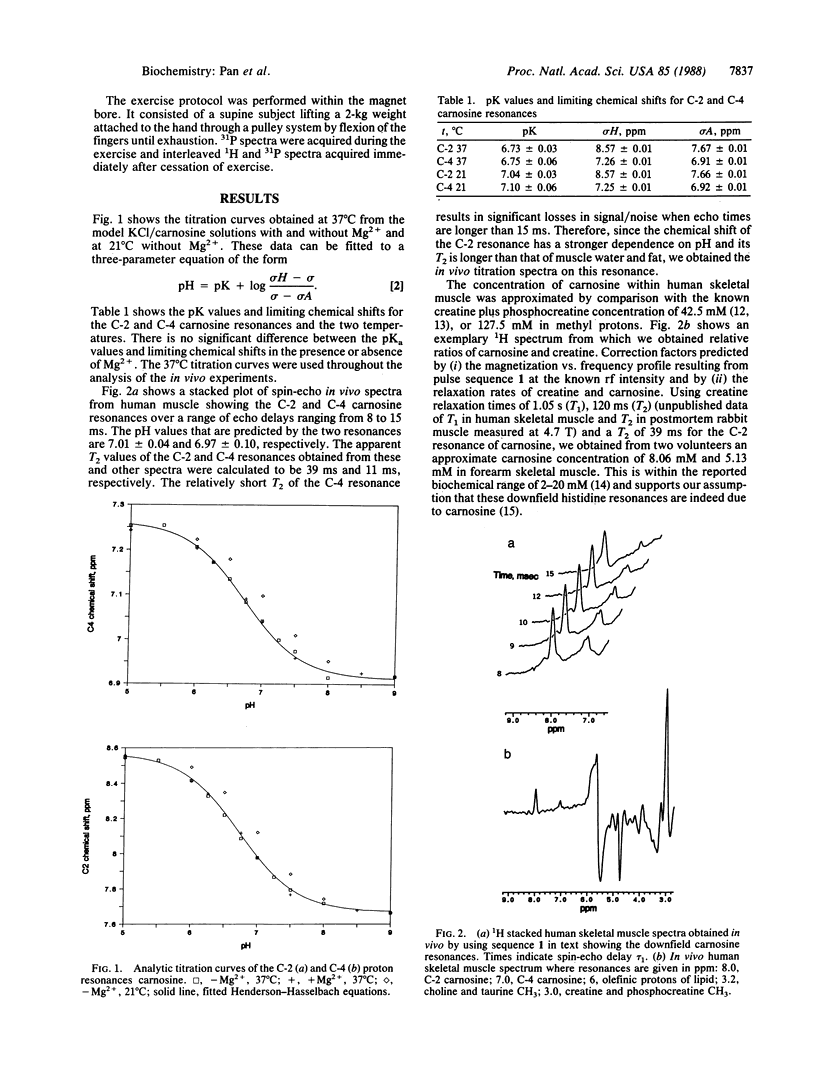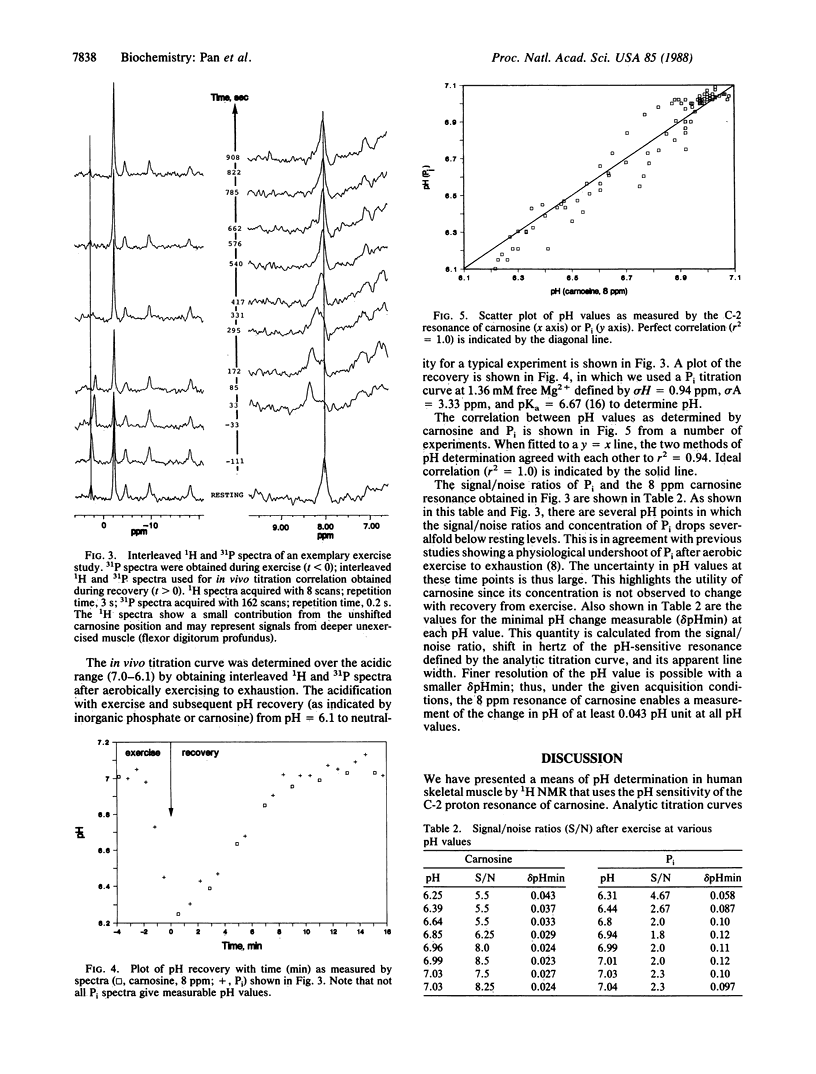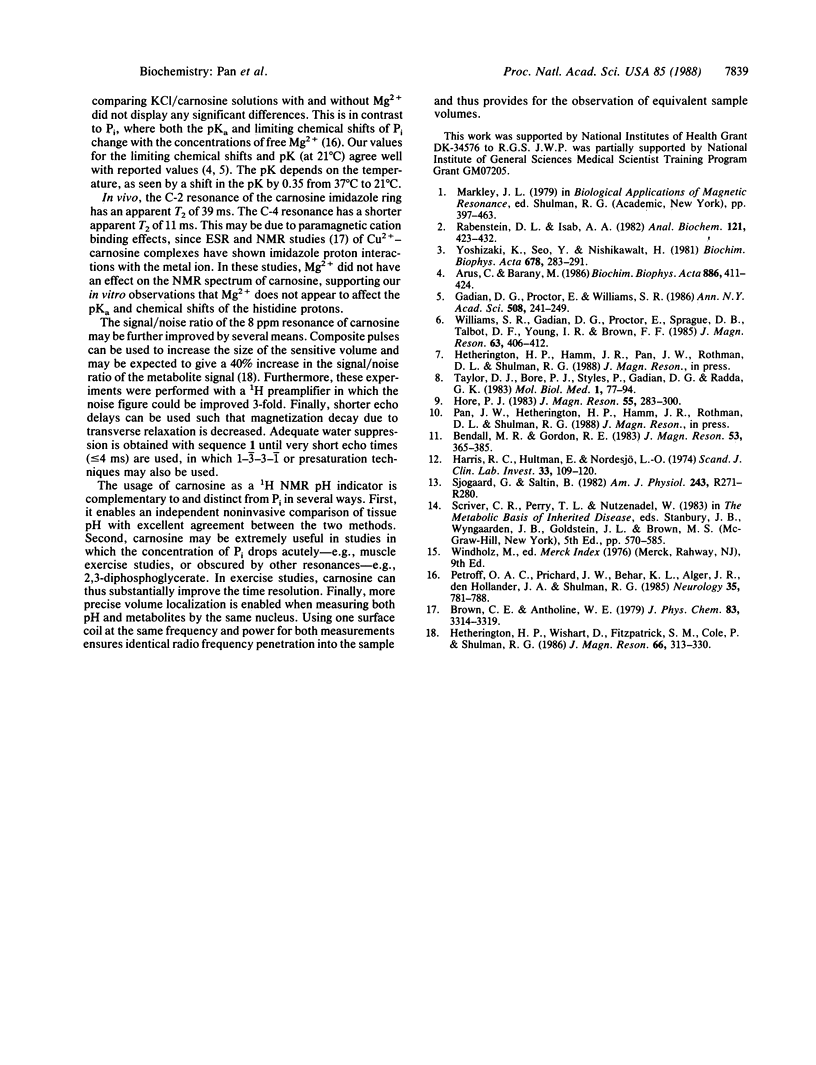Abstract
We report here the in vivo observation of the imidazole protons (C-2 and C-4) of carnosine (beta-Ala-His) by 1H NMR at 4.7 T in human skeletal muscle. The relationship between the pH and chemical shift of the C-2 and C-4 resonances was determined analytically. These titration curves were used to measure the resting pH of human muscle in vivo, 7.01 x 0.04 (C-2 proton) and 6.97 +/- 0.10 (C-4 proton). An in vivo titration curve of the C-2 proton resonance was determined by interleaving 1H and 31P NMR spectra after exhaustive exercise, during which muscle pH recovers from an acidic value of 6.1. We observed excellent agreement between the pH values as determined by the C-2 resonance of carnosine and that of inorganic phosphate. Carnosine provides an excellent pH indicator since (i) its concentration is relatively stable and (ii) it allows measurement of proton metabolites and pH to be achieved through the same coil, thus enabling a better signal/noise ratio and better localization.
Full text
PDF



Selected References
These references are in PubMed. This may not be the complete list of references from this article.
- Arús C., Bárány M. Application of high-field 1H-NMR spectroscopy for the study of perifused amphibian and excised mammalian muscles. Biochim Biophys Acta. 1986 May 29;886(3):411–424. doi: 10.1016/0167-4889(86)90177-1. [DOI] [PubMed] [Google Scholar]
- Gadian D. G., Proctor E., Williams S. R. Some recent applications of 1H NMR spectroscopy in vivo. Ann N Y Acad Sci. 1987;508:241–250. doi: 10.1111/j.1749-6632.1987.tb32908.x. [DOI] [PubMed] [Google Scholar]
- Harris R. C., Hultman E., Nordesjö L. O. Glycogen, glycolytic intermediates and high-energy phosphates determined in biopsy samples of musculus quadriceps femoris of man at rest. Methods and variance of values. Scand J Clin Lab Invest. 1974 Apr;33(2):109–120. [PubMed] [Google Scholar]
- Petroff O. A., Prichard J. W., Behar K. L., Alger J. R., den Hollander J. A., Shulman R. G. Cerebral intracellular pH by 31P nuclear magnetic resonance spectroscopy. Neurology. 1985 Jun;35(6):781–788. doi: 10.1212/wnl.35.6.781. [DOI] [PubMed] [Google Scholar]
- Rabenstein D. L., Isab A. A. Determination of the intracellular pH of intact erythrocytes by 1H NMR spectroscopy. Anal Biochem. 1982 Apr;121(2):423–432. doi: 10.1016/0003-2697(82)90502-4. [DOI] [PubMed] [Google Scholar]
- Sjøgaard G., Saltin B. Extra- and intracellular water spaces in muscles of man at rest and with dynamic exercise. Am J Physiol. 1982 Sep;243(3):R271–R280. doi: 10.1152/ajpregu.1982.243.3.R271. [DOI] [PubMed] [Google Scholar]
- Taylor D. J., Bore P. J., Styles P., Gadian D. G., Radda G. K. Bioenergetics of intact human muscle. A 31P nuclear magnetic resonance study. Mol Biol Med. 1983 Jul;1(1):77–94. [PubMed] [Google Scholar]
- Yoshizaki K., Seo Y., Nishikawa H. High-resolution proton magnetic resonance spectra of muscle. Biochim Biophys Acta. 1981 Dec 4;678(2):283–291. doi: 10.1016/0304-4165(81)90218-x. [DOI] [PubMed] [Google Scholar]


